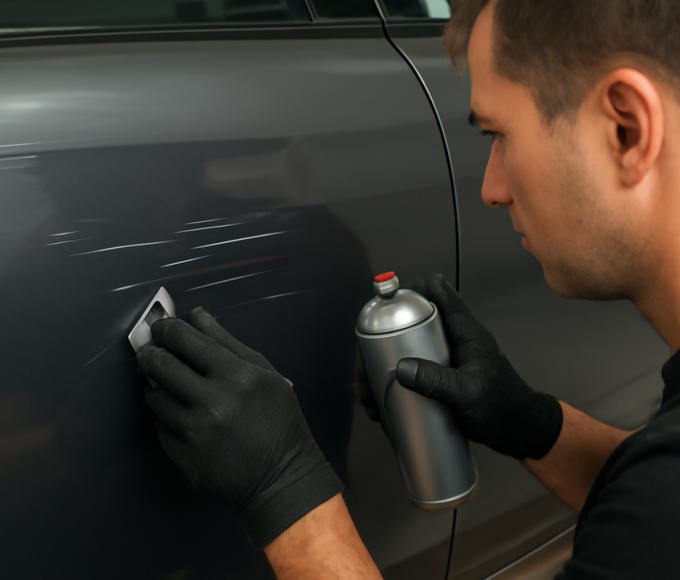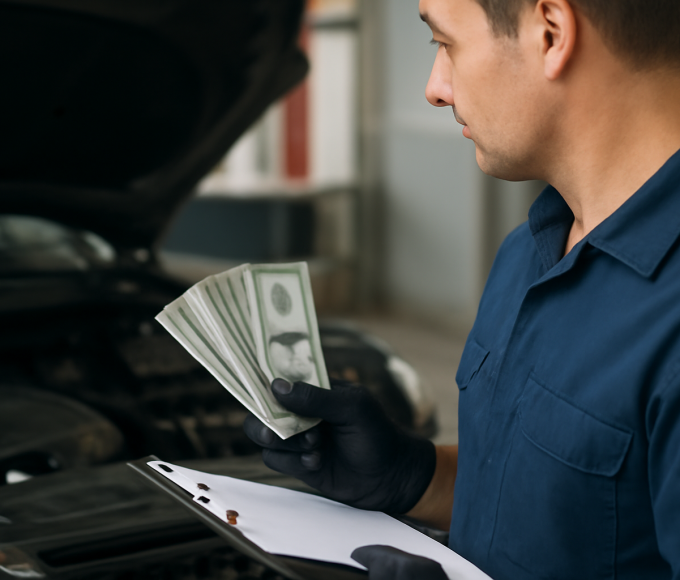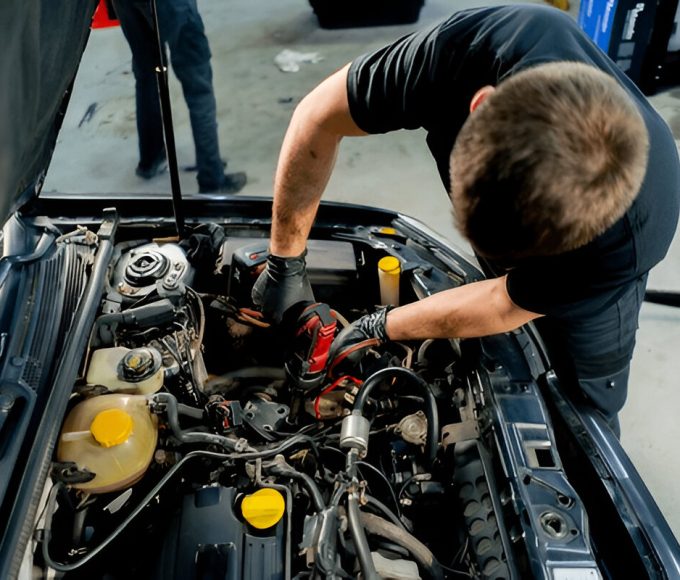Most drivers love a shiny ride. Yet many still ask, how often should you wash your car? A clean car does more than impress neighbors; it saves paint and resale value. Dirt, salt, pollen, and droppings strike daily. Over time, they eat a clear coat, dull color, and even spark rust. Luckily, you can stop that attack with a simple wash plan. This guide breaks down every factor that shapes the right car wash schedule for you. We cover driving habits, climate, surface care, and pro research. Each tip stays short, friendly, and factual. Grab a sponge—or a car wash coupon—and spot the ideal rhythm that keeps your wheels bright without wasting water or weekend hours.
Why Regular Washes Matter
The paint is thin, and the clear coat is thinner. Therefore, grime pierces those layers fast. Every splash of mud holds road chemicals that harm the finish. Also, tree sap bonds like glue and stains quickly. Because paint damage costs hundreds later, routine washing acts as cheap insurance. Studies from AAA show that cars washed weekly to keep up to 50 % more shine after five years. In addition, resale prices rise two to three percent when paint looks fresh. Moreover, according to NHTSA, a clean windshield improves night vision by almost 34 %. So, washing is not just vanity; it is safety and value. For quick reference:
- Dirt build-up ➜ traps moisture ➜ speeds rust
- Pollen films ➜ turn acidic in the rain ➜ etch paint
- Salt spray ➜ corrodes metal ➜ weakens body panels
Therefore, a steady wash habit protects both your wallet and well-being.
Daily Drivers Face Extra Grime
If you drive every day, then your car meets more hazards. Morning commutes add exhaust soot. Afternoon errands add parking lot dust. Paint suffers more because highways fling oil, tar, and brake dust. Experts at Consumer Reports suggest a weekly wash for cars logging 50 city miles per day.
Furthermore, if you park under trees, add a mid-week rinse. While that plan may sound strict, each wash only needs ten minutes with a pressure wand. Use a pH-neutral soap since harsh cleaners strip wax. Next, dry it with a microfiber towel because air drying leaves spots. Finally, slide your hand over the paint; contaminants remain if you feel the grit. Keep washing to satisfy the question how often should you wash your car until the surface feels smooth, like glass.
City Life Versus Country Roads
City cars battle exhaust grit and construction dust. Meanwhile, country cars fight gravel and bugs. Because each zone attacks paint differently, washing schedules change. Urban drivers should wash every seven days and wax every six weeks. Rural drivers, however, should wash every five days in bug season. They can stretch wax to eight weeks. For clarity, see this simple table:
| Condition | Suggested Wash Gap | Key Concern |
| Urban commute | 7 days | Soot, dust |
| Gravel back roads | 5 days | Stone chips |
| Mixed suburbs | 6 days | Pollen film |
Therefore, match your plan to the dirt you meet most.
Weather Plays a Clever Role
Rain feels like a free wash, yet it often leaves minerals that stain. Likewise, dry heat bakes bird waste onto paint. Because climate has power, adjust your schedule with the seasons. For example, during a wet spring, rinse after each storm. During a dry, windy summer, wash twice weekly to sweep dust before it scratches. Moreover, sunlight speeds up oxidation. Always wash in the shade or early morning. That step alone reduces water spots by 60 %. Next, apply a UV-blocking spray wax; it adds five extra washing days in harsh sun. Thus, tracking weather adds smart protection.
When Bugs and Bird Droppings Strike
Bug guts turn acidic in minutes. Bird droppings do the same. Therefore, scrub them off fast. If you commute through insect swarms, carry a pre-soaked wipe. When you spot residue, wipe, rinse, and drive on. Also, spray a bug-barrier product every two weeks on bumpers and mirrors. Quoting a detailer friend:
“The sooner you clean it, the cheaper the fix.”
That advice rings true because repainted panels cost more than a year of car-wash tokens. So, treat spots at once and schedule a full wash by the end of the week.
Road Salt: Winter’s Hidden Threat
Snow looks pretty; salt under snow does not. While salt melts ice, it also melts metal. Corrosion experts at the University of Michigan note that untreated salt can double rust speed. Therefore, wash after every slushy drive. Focus on wheel wells and underbody. Many coin bays offer undercarriage sprays. Use them, even if they cost an extra dollar. Next, dry the door seals to stop freezing. And after the last snow, deep clean and apply a polymer sealant. That layer blocks salt for weeks, saving paint until spring.
Waxing and Washing Go Together
Washing removes dirt; waxing seals shine. Both work best as a team. Wax fills micro-scratches, so fewer particles stick later. Because of that, a waxed car needs less soap yet finishes cleaner. Plan a liquid wax every six weeks or a paste wax every three months. Apply after a wash while the paint is cool. Then, buff gently with circular motions. You will see water bead during the next rain. That beading means protection. When beads flatten, re-wax. Therefore, observe water action as your timer.
DIY Wash or Professional Bay?
Cost, time, and water use steer this choice. DIY saves money but needs driveway space and buckets. A pro bay saves effort and can reclaim water. Meanwhile, touch-free bays lower paint risk but may miss stuck tar. Consider these numbers:
- The average home wash uses 100 gallons.
- A modern bay recycles, using 40 gallons.
- DIY materials cost about $1 per wash after gear.
- Bay washes cost $8–$15 each.
Therefore, blend both. Hand wash monthly for detail work. Use a soft-cloth bay for quick cleans in between. In addition, always skip gas-station brushes; they hold grit that scratches.
Coatings and Wraps Protect the Paint
Modern products guard paint long after a wash. Clear film and ceramic coatings sit on top of the clear coat. Because they seal pores, dirt clings less, and water sheets away quickly. Tests by the Society of Automotive Engineers show ceramic layers cut UV fade by 35 % over two summers. Although these treatments cost more upfront, they pay back in fewer washes and higher resale value.
Consider a ceramic coat as liquid glass to keep the language plain. It dries hard and slick, and bugs slide off with one hose spray. Likewise, a clear vinyl wrap acts like a phone screen film. It absorbs chips, so the paint stays whole.
How often should you wash your car?
Especially, a coated car? You can stretch gaps for two or three days because there are fewer dust sticks. Yet you must still rinse the salt and bird waste fast; those acids can seep under any layer if left too long.
Quick checklist
- Inspect coating beads after rain.
- Wash with pH-neutral soap only.
- Never polish a ceramic layer unless the maker says so.
Therefore, coatings add comfort, but routine care still rules your car wash schedule.
Eco-Friendly Washing Choices
Drivers now ask, “Can I clean my ride and guard rivers too?” The answer is yes, with mindful steps. First, pick soaps labeled biodegradable. These break down before they reach streams. Next, wash on gravel or grass, never on a sloped driveway that drains into storm grates. Grass filters suds naturally.
Moreover, bucket math helps: The two-bucket method uses just 4 gallons—half a single garden‐hose minute. One bucket holds soapy water; the other holds rinse water. Dip the mitt in soap, scrub, then dunk in the rinse bucket. This simple trick slashes water use by 60 %.
“Your wash water has a travel plan,” says an EPA scientist. “Guide it through soil, not concrete, and harm drops sharply.”
If local rules ban home washing, visit a reclamation bay. These sites recycle up to 90 % of used water. Also, choose touch-free cycles that rely on pressurized water rather than spinning brushes. Because friction is lower, the paint lasts longer, and micro-scratches fade.
Therefore, an eco-wash keeps both the paint and the planet bright.
Tools and Tactics for a Scratch-Free Finish
The right tools can halve wash time and dodge swirl marks. Start with a soft microfiber mitt. Unlike sponges, microfiber fibers lift grit away from paint. A grit guard at the bottom of your rinse bucket traps sand so it stays off the mitt.
Additionally, always move the mitt in straight lines, not circles. Straight lines hide any minor marks from sunlight. Dry with a waffle-weave towel; it soaks water without rubbing hard. If you own a leaf blower, use it on mirrors and crevices. That quick blast pushes water out and lowers drip lines by 80 %.
Temperature matters, too. Wash between 50 °F and 75 °F. Above that, soap dries too fast and makes streaks. Below freezing, doors can ice shut. If cold weather forces a wash, pick a heated bay and carry silicone spray for door seals.
Essential kit
| Item | Purpose | Replacement time |
| Microfiber mitt | Lift dirt safely | Every 15 washes |
| Waffle towel | Streak-free drying | Every 30 washes |
| pH-neutral shampoo | Gentle clean | As needed |
| Grit guard insert | Trap sand in bucket | Durable |
Master these tools; each wash feels easier, faster, and safer for your paint.
Common Myths That Cloud Car-Wash Wisdom
Myth 1: “Rain is nature’s free wash.”
In truth, rainwater holds airborne pollutants. When droplets dry, they leave mineral rings that etch a clear coat. Therefore, always rinse after a shower.
Myth 2: “Dish soap works on cars.”
Dish soap cuts grease well and strips wax faster than sandpaper. However, over time, paint fades quickly. Instead, use soaps made for vehicles.
Myth 3: “Only winter salt causes rust.”
Summer beach trips splash salty mist, too. Even inland, road dust holds chloride from de-icing trucks months later. Thus, keep the wash habit year-round.
Myth 4: “Automatic brushes ruin paint every time.”
Modern soft-cloth tunnels use foam fingers that are lighter than cotton T-shirts. If brushes stay clean, damage risk stays low. Check a bay’s upkeep signs before entering.
Myth 5: “Black cars need special soap.”
All colors share the same clear coat. Black shows swirl sooner. Good technique, not magic soap, prevents haze.
Because myths travel fast, stick to research and proven tips. Your paint will thank you each mile.
Quick Tips for Busy Owners
Even short tasks guard paint. First, keep a spray detailer and towel in the trunk. Next, rinse the wheels when you fuel up. Also, they installed mud flaps, cutting roadside splash by 28 %. Furthermore, park indoors when you can since have covered spots reduce wash needs by two days each week. Finally, set a phone reminder; routine beats guesswork. When this curiosity of “how often should you wash your car” turns into a habit, dirt never gets a head start.
Finding Your Ideal Schedule
No single calendar suits every driver. Begin with a seven-day cycle. Then, watch paint, windshield clarity, and water beading. If dust returns sooner, shorten the gap. If the paint stays slick longer, extend it by two days. Remember, factors such as mileage, location, and climate often shift. Therefore, reevaluate each season. Keep notes on a memo pad or phone app. Soon, you will spot the perfect rhythm that fits your life and protects your car. After all, smart care today leads to easier cleaning tomorrow, brighter paint next year, and better trade-in offers down the road. How will you tune your wash routine this week?

















Leave a comment